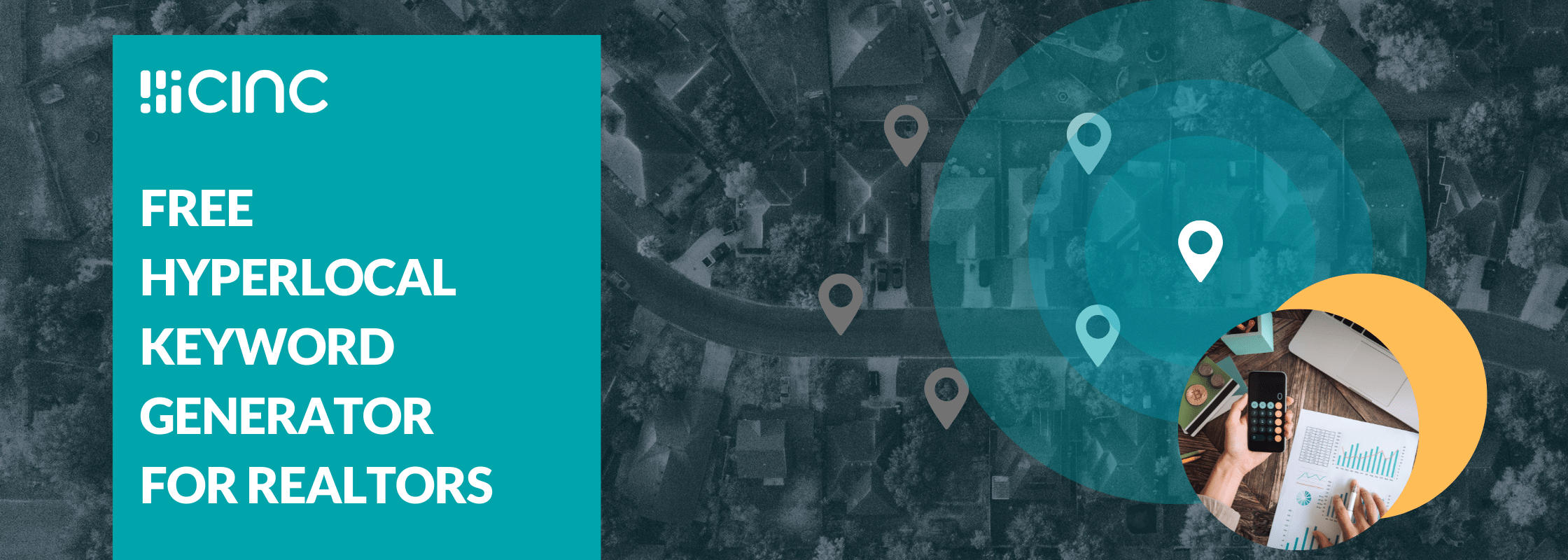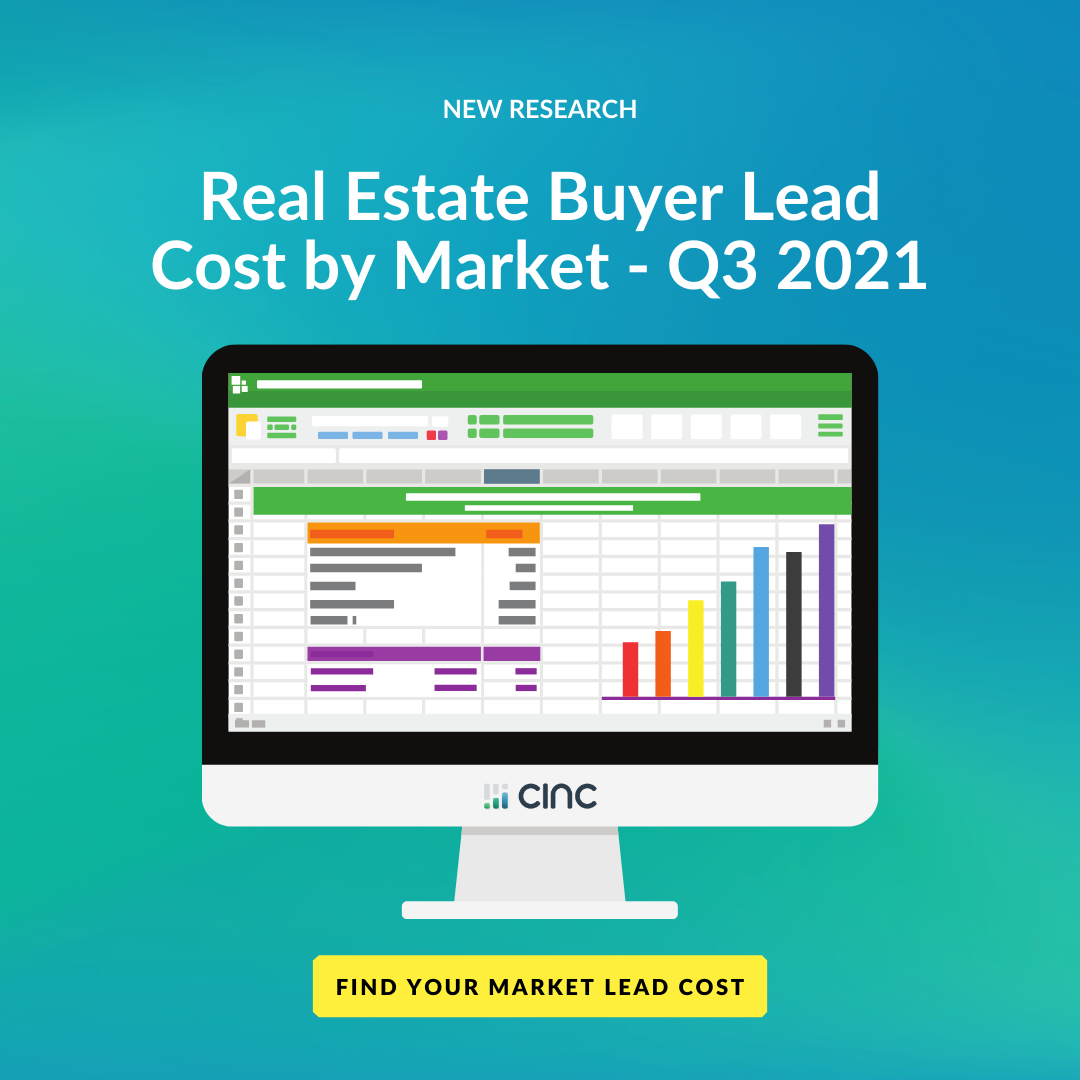.png?width=770&name=Real%20Estae%20Lead%20Search%20Volume%20Report%20Q3%202022%20(1).png)
In our experience over the past decade or so, home search traffic on Google (using the search query "homes for sale" on Google Trends) is one of the best proxies for real estate lead volume in North American for both the United States and Canada.
As such, we get asked a ton from our real estate broker and agent clients on what trends we are seeing on a quarterly and annual basis in terms of real estate lead volume.
Thus, based on that feedback, we figured it would be easier to share out what we're seeing in a somewhat more consolidated format.
This data here is designed to complement our other Google Buyer Real Estate Lead Cost Reports, Google Buyer Seller Lead Cost Reports, and Google Real Estate Lead Value Index Reports we put out on a quarterly basis.
This is the first iteration of the Real Estate Lead Search Volume Trend Report based on data from Google Trends that we watch closely. We will be looking to continue to improve the quality of this report so please share any feedback or improvement ideas to anna@cincpro.com .
United States Real Estate Lead Search Volume Trends in 2022
The Google Trends chart above is based on the following United States real estate lead search volume comparison on Google Trends you can access here.
In the chart, the red line represents real estate lead search volume trends for the first 9 months of 2021 and the blue line represents real estate lead search volume trends for the first 9 months of 2022. I have also provided Freddie Mac's mortgage rate trends in the US from the first 9 months of 2022 as a comparison.

Source: Residential Real Estate Mortgage Rate Trends According to Freddie Mac from 1st 9 Months of 2022
Overall home search traffic in the United States was down 21% year-over-year in the first 9 months of the year in the United States.
Q1 United States Real Estate Lead Search Volume Trends
Real estate lead search volume was much similar in Q1 of 2022 vs. Q1 of 2021 as the 30 year mortgage rate stayed below 4% in 2022. In fact, in the first week of February 2022, there was a less than 5% difference in year-over-year real estate search volume.
Q2 United States Real Estate Lead Search Volume Trends
As mortgage rates rose from below 4% in mid-March to nearly 6% in mid-June, the search volume gap widened year-over-year. The gap peaked at the end of May when real estate lead search volume was down over 30% year-over-year.
Q3 United States Real Estate Lead Search Volume Trends
As mortgage rates fell from nearly 6% in mid-June to below 5% in early August, 2022 and 2021 real estate lead search traffic became more comparable with home search traffic in the third week of August only down 11% year-over-year.
However, as mortgage rates began to rise again in later August and September well past 6%, there was a wider lag in real estate lead search volume as the gap widened past 20% year-over-year again.
Canada Real Estate Lead Search Volume Trends in 2022
The Google Trends chart above is based on the following Canada real estate lead search volume comparison on Google Trends you can access here.
In the chart, the red line represents real estate lead search volume trends for the first 9 months of 2021 and the blue line represents real estate lead search volume trends for the first 9 months of 2022. I have also provided Bank of Canada's 3-5 year government bond yield data (as a proxy for mortgage rate trends in the Canada) from the first 9 months of 2022 as a comparison.

Source: Bank of Canada Interest Rate Trends Impacting Canadian Real Estate Market 1st 9 Months of 2022
Overall home search traffic in Canada was down 19% year-over-year in the first 9 months of the year in Canada.
Q1 Canada Real Estate Lead Search Volume Trends
Real estate lead search volume was much similar in Q1 of 2022 vs. Q1 of 2021 as 3-5 year Canadian government bond yields hovered around 1.5% for most of Q1 2022. In fact, in the last week of March 2022, there was only a 10% difference in year-over-year real estate search volume.
Q2 Canada Real Estate Lead Search Volume Trends
As 3-5 year Canadian government bond yields rose from below 1.5% in early March to over 3.5% in mid-June, the search volume gap widened year-over-year. The gap peaked at mid-May when real estate lead search volume was down over 27% year-over-year.
Q3 Canada Real Estate Lead Search Volume Trends
As 3-5 year Canadian government bond yields fell from over 3.5% in mid-June to nearly 2.5% in early August, 2022 and 2021 real estate lead search traffic became more comparable with home search traffic in the first week of August only down 9% year-over-year.
However, as 3-5 year Canadian government bond yields began to rise again in later August and September approaching 3.5%, there was a wider lag in real estate lead search volume as the gap widened past 25% year-over-year.
Real Estate Lead Search Volume Trends in Q3 2022 to Top 30 US Real Estate Markets
Real Estate Lead Search Volume Q3 2022 vs. Q2 2022 in Top 30 US Real Estate Markets
The data below (using similar Google Trends data mentioned above) compares the real estate lead search volume trends in Q3 2022 vs. Q2 2022 in the 30 largest US real estate markets. It is ranked from markets with most positive change to least positive change (in many cases negative).
| % Change Rank | Market | State | Q3 2022 vs. Q2 2022 % Change in Real Estate Lead Search Volume |
| 1 | New York | New York | 3.2% |
| 2 | St. Louis | Missouri | 1.6% |
| 3 | Minneapolis - St. Paul | Minnesota | 1.5% |
| 4 | Philadelphia | Pennsylvania | 1.5% |
| 5 | Boston | Massachusetts | 1.4% |
| 6 | Detroit | Michigan | 0% |
| 7 | Kansas City | Missouri | 0% |
| 8 | Los Angeles | California | -1.4% |
| 9 | Dallas - Ft. Worth | Texas | -1.5% |
| 10 | Washington D.C. | D.C. | -1.5% |
| 11 | Cleveland - Akron | Ohio | -1.5% |
| 12 | San Francisco - Oakland | California | -1.5% |
| 13 | San Diego | California | -1.6% |
| 14 | San Antonio | Texas | -1.8% |
| 15 | Chicago | Illinois | -2.7% |
| 16 | Houston | Texas | -2.8% |
| 17 | Charlotte | North Carolina | -2.9% |
| 18 | Pittsburgh | Pennsylvania | -3.2% |
| 19 | Cincinnati | Ohio | -3.4% |
| 20 | Sacramento - Stockton | California | -4.2% |
| 21 | Portland | Oregon | -4.3% |
| 22 | Denver | Colorado | -4.5% |
| 23 | Orlando - Melbourne | Florida | -5.4% |
| 24 | Atlanta | Georgia | -5.6% |
| 25 | Phoenix | Arizona | -6.8% |
| 26 | Tampa - St. Petersburg | Florida | -6.8% |
| 27 | Miami - Ft. Lauderdale | Florida | -7.2% |
| 28 | Baltimore | Maryland | -7.6% |
| 29 | Seattle - Tacoma | Washington | -9.5% |
| 30 | Las Vegas | Nevada | -10.0% |
All 7 of the Top 30 markets that experienced positive or neutral changes in Q3 2022 vs. Q2 2022 were located either in the Northeast or Midwest. The best guess of making sense of this data is these were real estate markets that saw more muted gains during the housing boom post-pandemic compared to their peers.
On the other hand, the 10 markets with the most negative change in Q3 2022 vs. Q2 2022 were all located in the West or in the South. Similar to the point above, it might be that real estate markets that saw the largest gains during the housing boom are likely cooling off quicker than their peers.
Real Estate Lead Search Volume Q3 2022 vs. Q3 2021 in Top 30 US Real Estate Markets
The data below (using similar Google Trends data mentioned above) compares the real estate lead search volume trends in Q3 2022 vs. Q2 2021 in the 30 largest US real estate markets. It is ranked from markets with most positive change to least positive change (in all cases negative here).
|
% Change Rank |
Market |
State |
Q3 2022 vs. Q2 2021 % Change in Real Estate Lead Search Volume |
|
1 |
-11.4% |
||
|
2 |
-13.9% |
||
|
3 |
Cleveland - Akron |
Ohio |
-14.9% |
|
4 |
Charlotte |
North Carolina |
-15.3% |
|
5 |
San Antonio |
Texas |
-15.9% |
|
6 |
Las Vegas |
Nevada |
-16.7% |
|
7 |
Philadelphia |
Pennsylvania |
-16.9% |
|
8 |
St. Louis |
Missouri |
-17.1% |
|
9 |
Kansas City |
Missouri |
-17.4% |
|
10 |
Houston |
Texas |
-17.4% |
|
11 |
New York |
New York |
-18.3% |
|
12 |
Atlanta |
Georgia |
-18.4% |
|
13 |
-18.8% |
||
|
14 |
Phoenix |
Arizona |
-18.8% |
|
15 |
Cincinnati |
Ohio |
-19.4% |
|
16 |
Dallas - Ft. Worth |
Texas |
-19.4% |
|
17 |
-19.5% |
||
|
18 |
-19.7% |
||
|
19 |
Minneapolis - St. Paul |
Minnesota |
-20.5% |
|
20 |
Pittsburgh |
Pennsylvania |
-20.6% |
|
21 |
Detroit |
Michigan |
-21.1% |
|
22 |
Chicago |
Illinois |
-22.1% |
|
23 |
Boston |
Massachusetts |
-22.2% |
|
24 |
Baltimore |
Maryland |
-22.6% |
|
25 |
Portland |
Oregon |
-23.1% |
|
26 |
-23.3% |
||
|
27 |
Seattle - Tacoma |
Washington |
-23.6% |
|
28 |
Denver |
Colorado |
-23.7% |
|
29 |
Washington D.C. |
D.C. |
-23.9% |
|
30 |
-29.5% |
The Southern and Western real estate markets seem to diverge more when you compare real estate lead search volume year-over-year in Q3 2022.
The Southern real estate markets seems to be holding up better in terms of real estate lead search volume, with 4 of the 5 largest markets with the least negative year-over-year changes being located in the South.
On the other hand, Western markets have seen a wider fall off in real estate lead volume, with 5 of the 6 largest declines year-over-year being located out West.
Want to learn how better local targeting can help reduce the impact of cooling real estate lead search volumes in 2022?
Try our free Google targeting tool here to find hidden pockets of high volume and more cost effective hyper-local leads near you.
Additional Google Real Estate Lead Gen Resources from CINC:
Watch our recent 2022 on-demand lead gen webinar here where we discuss new trends for real estate teams and agents on Google Ads, including a deep dive on Google Local Service Ads (LSA's) for realtors. You can also access the Google Ads for Real Estate Lead Generation 2022 Guide here.
Here are links to recent market updates including United States Real Estate Lead Generation Market Update , Canada Real Estate Lead Generation Market Update, Florida Real Estate Lead Generation Market Update, and California Real Estate Lead Generation Market Update.

.png)




